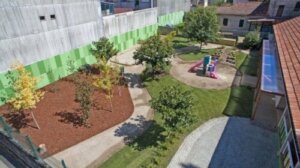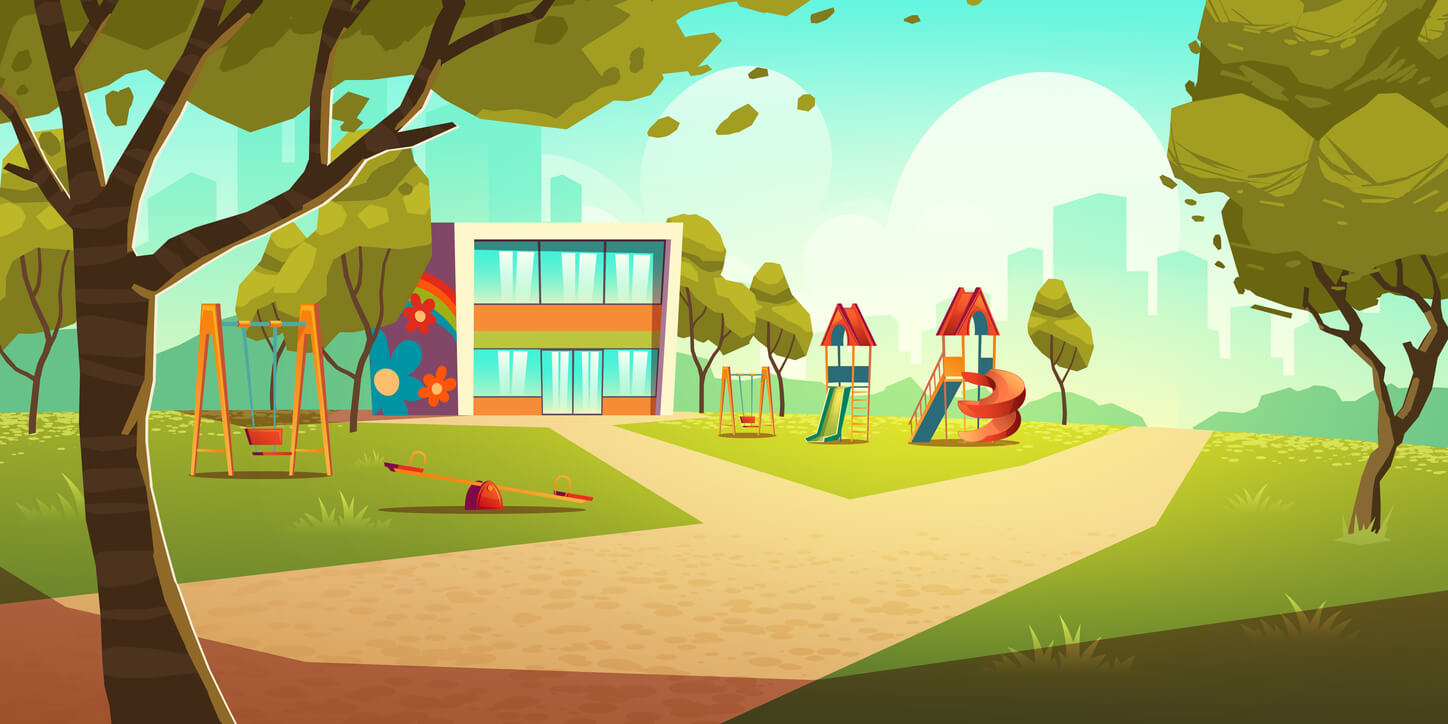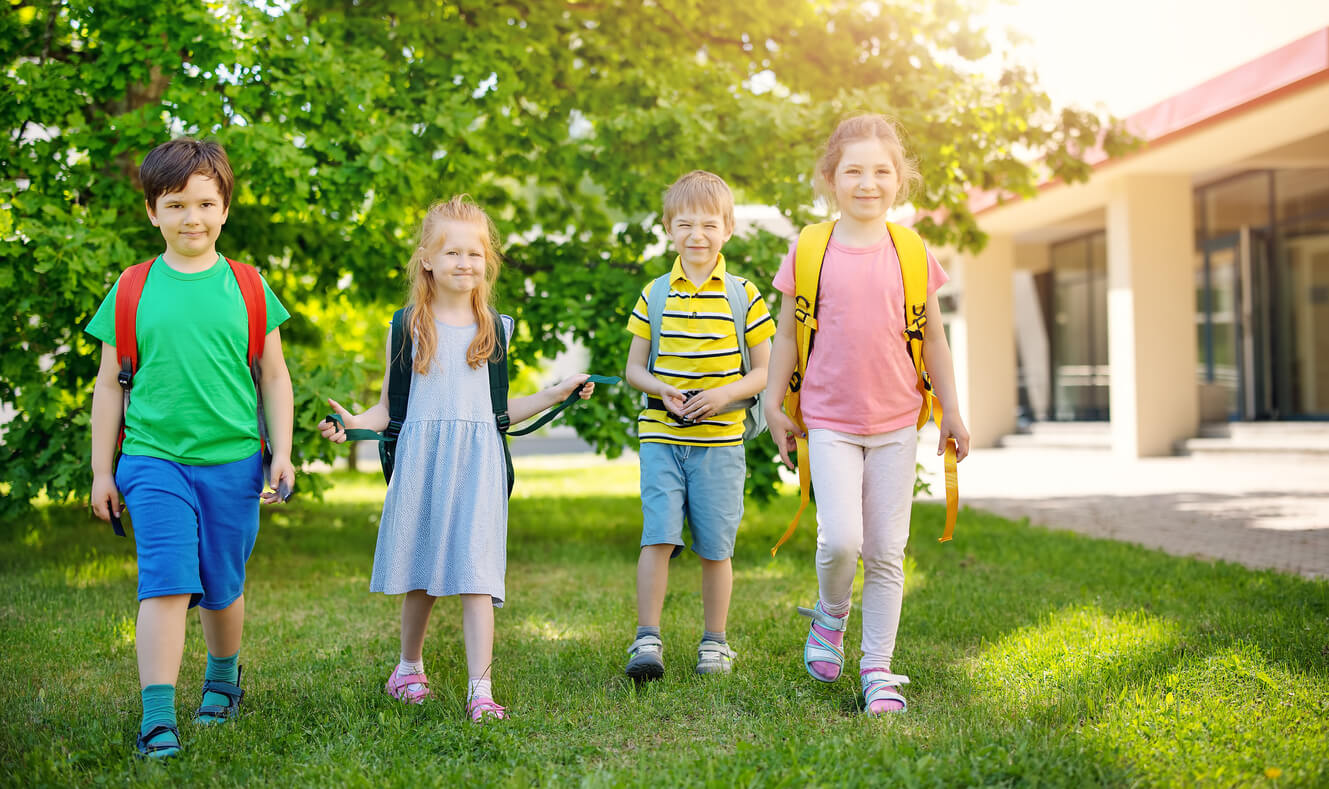Green Schoolyards and Students Who Are More Connected to Nature

Fortunately, school institutions are increasingly opting for green schoolyards. Turning to an infrastructure intercepted by nature brings multiple benefits for the health and well-being of the entire educational community. In addition, it’s an initiative that respects the effects of climate change.
Replacing asphalt portions with soil and concrete spaces with vegetable gardens; planting trees and shrubs; removing metal structures and including sandboxes… All these measures have a positive impact in that they facilitate the creation of a natural environment within schools. In this way, children and teachers can enjoy the benefits of being more connected to nature.
Green schoolyards, a valuable proposal
Due to the industrialization process and technological advances, a large part of the world’s population lives in urban areas invaded by pavement, huge buildings, and all kinds of artifacts. Within these cities, there are thousands and thousands of schools that would benefit from having green outdoor spaces.
The school environment is where children spend most of their day, so it’s worth rethinking the context and taking into account how it impacts their physical, social, and cognitive development.
Recess is the most anticipated time for students. It’s when they clear their minds after concentrating on class, enjoy a refreshment, and play among friends. Moreover, during those minutes, children also learn. In this regard, passing this time between classes in a natural environment brings a series of benefits that lead to a better quality of life. Therefore, green schoolyards reflect an extremely interesting proposal, as they translate into playful environments for learning and well-being.

What happens in green schoolyards?
When schoolyards are full of life, the experience becomes fascinating for little ones. Sharing an ecosystem with insects, plants, logs, soil, sand, and water enhances sensory stimulation and promotes the development of curiosity. In turn, the power of observation is intensified while positive changes in attention are produced. Everything becomes worthy of admiration.
Recess has always been a key moment in the school day. It’s a valuable space for learning to socialize, share, and develop a sense of empathy and solidarity. And what could be better than having an outdoor environment for this can take place?
Learning in a natural setting
Green schoolyards are also a place to learn about biodiversity and how to be more respectful of the environment. A group of children marveling at a row of ants or a fluttering butterfly is much more than just a nice scene to appreciate. These are children experiencing a deep connection to the world they live in.
This is an important issue: Realizing the value of nature awakens the desire to protect it. Therefore, in the future, children will be able to take more conscious steps toward a better world.

Playing in (and with) nature
Without underestimating manufactured toys or didactic material available in technological formats, it’s clear that playing in (and with) nature has an unquestionable charm. Children explore a space that’s rich in stimuli and there, they become genuinely interested in what they observe. Moreover, their motivation to continue learning about animals, plants, or elements such as wind, sun, and the sky increases significantly.
“A space full of shared experiences and where curiosity stimulates questions and produces a research process that will lead to learning”.
– Laura Lladós –
We’re part of nature
Getting their hands dirty with soil, playing with water, making shapes with twigs, dipping their hands in the sand, observing a tree trunk, or being surprised by an insect are very valuable experiences.
In short, green schoolyards represent a hopeful proposal because in order to foster a society that’s more empathetic with the environment, we need to create conscious spaces. In them, a connection with nature must be present from the first years of life. After all, people aren’t strangers to the wonders of nature. On the contrary, we’re part of it.
Fortunately, school institutions are increasingly opting for green schoolyards. Turning to an infrastructure intercepted by nature brings multiple benefits for the health and well-being of the entire educational community. In addition, it’s an initiative that respects the effects of climate change.
Replacing asphalt portions with soil and concrete spaces with vegetable gardens; planting trees and shrubs; removing metal structures and including sandboxes… All these measures have a positive impact in that they facilitate the creation of a natural environment within schools. In this way, children and teachers can enjoy the benefits of being more connected to nature.
Green schoolyards, a valuable proposal
Due to the industrialization process and technological advances, a large part of the world’s population lives in urban areas invaded by pavement, huge buildings, and all kinds of artifacts. Within these cities, there are thousands and thousands of schools that would benefit from having green outdoor spaces.
The school environment is where children spend most of their day, so it’s worth rethinking the context and taking into account how it impacts their physical, social, and cognitive development.
Recess is the most anticipated time for students. It’s when they clear their minds after concentrating on class, enjoy a refreshment, and play among friends. Moreover, during those minutes, children also learn. In this regard, passing this time between classes in a natural environment brings a series of benefits that lead to a better quality of life. Therefore, green schoolyards reflect an extremely interesting proposal, as they translate into playful environments for learning and well-being.

What happens in green schoolyards?
When schoolyards are full of life, the experience becomes fascinating for little ones. Sharing an ecosystem with insects, plants, logs, soil, sand, and water enhances sensory stimulation and promotes the development of curiosity. In turn, the power of observation is intensified while positive changes in attention are produced. Everything becomes worthy of admiration.
Recess has always been a key moment in the school day. It’s a valuable space for learning to socialize, share, and develop a sense of empathy and solidarity. And what could be better than having an outdoor environment for this can take place?
Learning in a natural setting
Green schoolyards are also a place to learn about biodiversity and how to be more respectful of the environment. A group of children marveling at a row of ants or a fluttering butterfly is much more than just a nice scene to appreciate. These are children experiencing a deep connection to the world they live in.
This is an important issue: Realizing the value of nature awakens the desire to protect it. Therefore, in the future, children will be able to take more conscious steps toward a better world.

Playing in (and with) nature
Without underestimating manufactured toys or didactic material available in technological formats, it’s clear that playing in (and with) nature has an unquestionable charm. Children explore a space that’s rich in stimuli and there, they become genuinely interested in what they observe. Moreover, their motivation to continue learning about animals, plants, or elements such as wind, sun, and the sky increases significantly.
“A space full of shared experiences and where curiosity stimulates questions and produces a research process that will lead to learning”.
– Laura Lladós –
We’re part of nature
Getting their hands dirty with soil, playing with water, making shapes with twigs, dipping their hands in the sand, observing a tree trunk, or being surprised by an insect are very valuable experiences.
In short, green schoolyards represent a hopeful proposal because in order to foster a society that’s more empathetic with the environment, we need to create conscious spaces. In them, a connection with nature must be present from the first years of life. After all, people aren’t strangers to the wonders of nature. On the contrary, we’re part of it.
All cited sources were thoroughly reviewed by our team to ensure their quality, reliability, currency, and validity. The bibliography of this article was considered reliable and of academic or scientific accuracy.
- Abelleira Bardanca, Á. (2018). Patios verdes y escuelas abiertas a la naturaleza. RELAdEI. Revista Latinoamericana De Educación Infantil, 6(1-2), 161-166. Recuperado a partir de https://revistas.usc.gal/index.php/reladei/article/view/5008
- Lladós, L. (2018). El contacto con la naturaleza: ¿moda o necesidad? Aula de Infantil, 96, 27-32.
- Mateo González, E., Farnos Llera, C. y Saez-Bondía, MJ. Educar en contacto con la naturaleza: los patios en los centros de educación infantil. Hacia un modelo de investigación sostenible en educación. Disponible en Educar-en-contacto-con-la-naturaleza-los-patios-en-los-centros-de-Educacion-Infantil.pdf (researchgate.net).
This text is provided for informational purposes only and does not replace consultation with a professional. If in doubt, consult your specialist.








